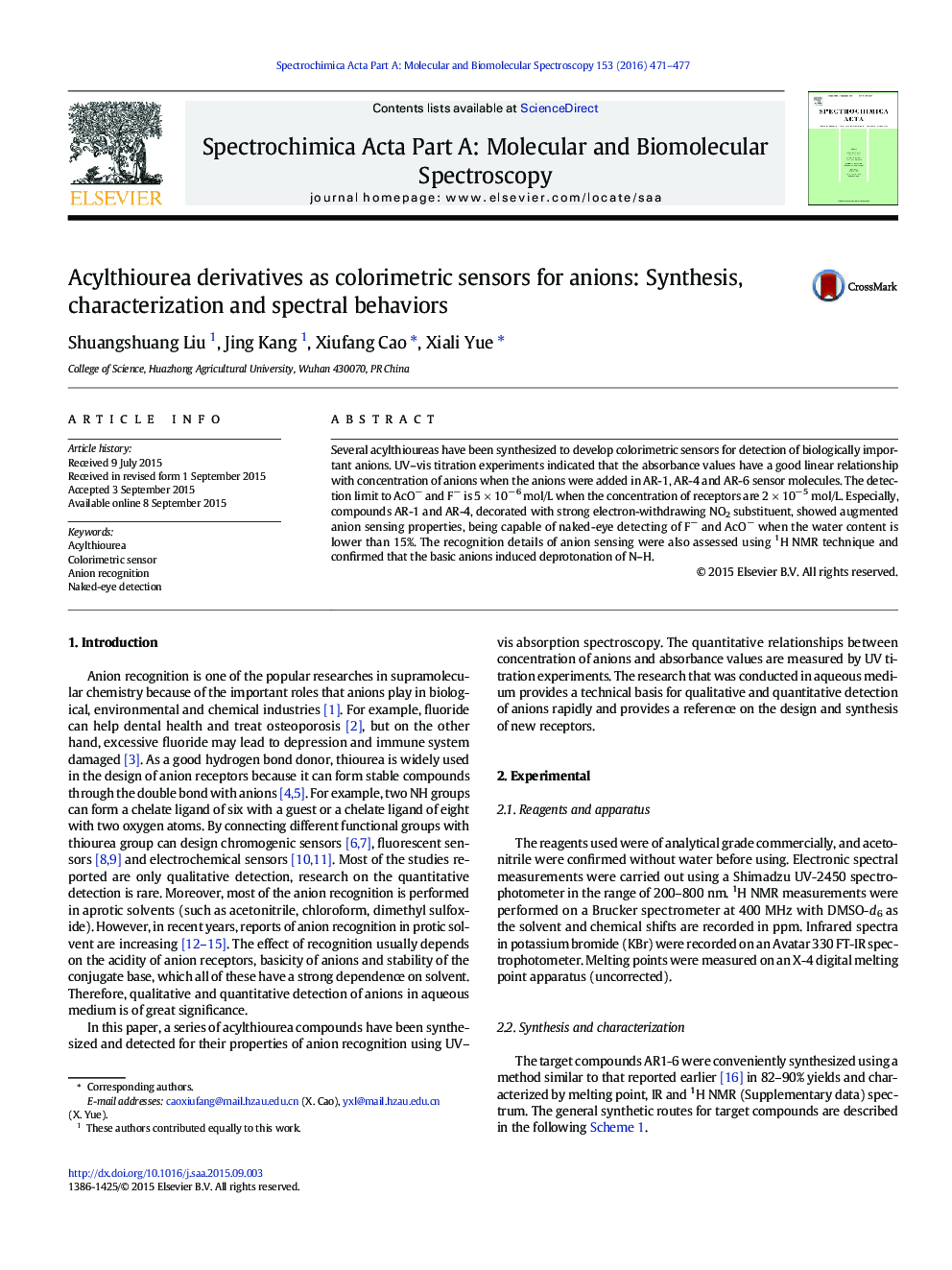| Article ID | Journal | Published Year | Pages | File Type |
|---|---|---|---|---|
| 1228751 | Spectrochimica Acta Part A: Molecular and Biomolecular Spectroscopy | 2016 | 7 Pages |
•Receptors AR-1, AR-4, and AR-6 can be utilized as a colorimetric chemosensor for detection of AcO− or F− anions.•Receptors AR-1 and AR-4 can naked-eye detect of F− and AcO−.•Receptors exhibit low detection limit when the concentration of receptors are 2 × 10− 5 mol/L.
Several acylthioureas have been synthesized to develop colorimetric sensors for detection of biologically important anions. UV–vis titration experiments indicated that the absorbance values have a good linear relationship with concentration of anions when the anions were added in AR-1, AR-4 and AR-6 sensor molecules. The detection limit to AcO− and F− is 5 × 10− 6 mol/L when the concentration of receptors are 2 × 10− 5 mol/L. Especially, compounds AR-1 and AR-4, decorated with strong electron-withdrawing NO2 substituent, showed augmented anion sensing properties, being capable of naked-eye detecting of F− and AcO− when the water content is lower than 15%. The recognition details of anion sensing were also assessed using 1H NMR technique and confirmed that the basic anions induced deprotonation of N–H.
Graphical abstractThioureas have been synthesized to develop colorimetric sensors for detection of biologically important anions. The recognition details of anion sensing were assessed using UV–vis titration, IR, and 1H NMR techniques.Figure optionsDownload full-size imageDownload as PowerPoint slide
